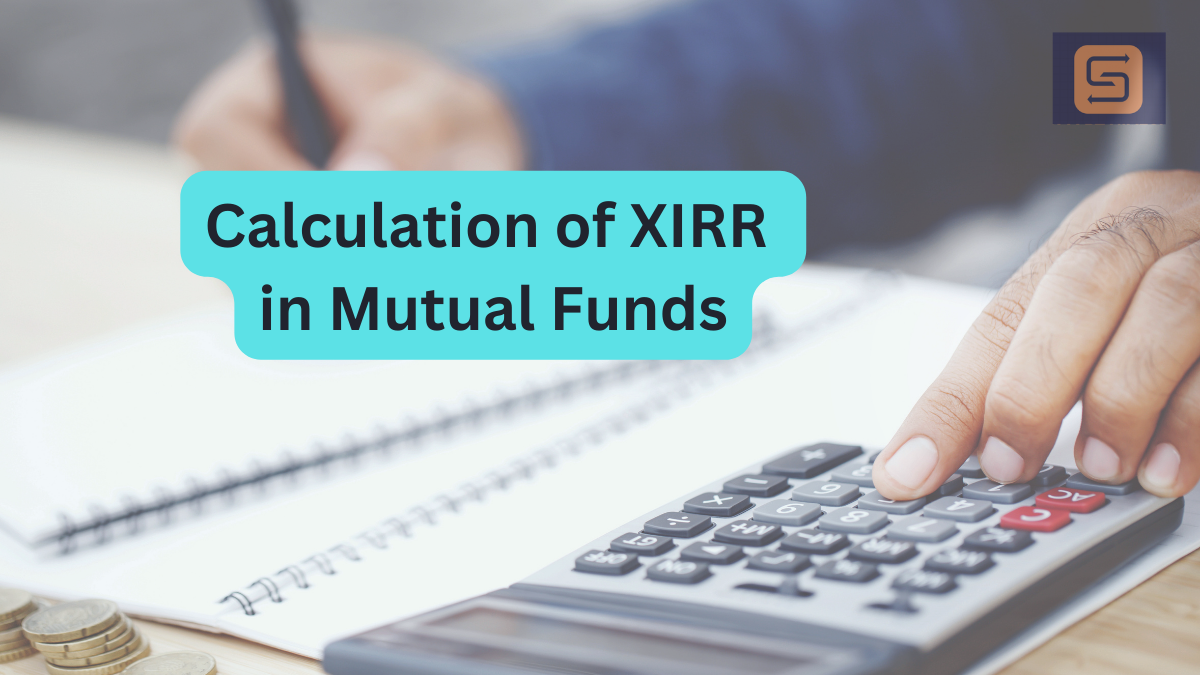Introduction
Welcome to our comprehensive guide on calculating XIRR for a mutual fund investment. In this article, we will walk you through a detailed example of how to calculate XIRR for a mutual fund investment, equipping you with the knowledge to make informed financial decisions. Let’s dive in!
Understanding XIRR in Mutual Fund Investments
Before we delve into the calculations, let’s briefly recap what XIRR is and why it matters in the world of mutual funds. XIRR, or Extended Internal Rate of Return, is a powerful metric used to assess the actual returns generated by an investment, considering the timings and amounts of cash flows. Unlike simple annualized returns, XIRR provides a more accurate representation of a mutual fund’s performance over time.
-
The Investment Scenario
To illustrate the XIRR calculation, we’ll introduce you to our fictional investor, Ajit. On January 1, 2020, Ajit decided to invest in a mutual fund to achieve his long-term financial goals. Let’s examine the timeline of his investments and withdrawals:
-
- On January 1, 2020, Ajit made an initial investment of Rs. 1,00,000 into the mutual fund.
- On July 1, 2020, he contributed an additional Rs. 25,000 to his investment.
- On January 15, 2021, Ajit made another contribution of Rs. 30,000.
- On December 31, 2021, he decided to withdraw Rs. 50,000 from his investment.
- On June 30, 2022, Ajit made a further investment of Rs. 20,000.
- Lastly, on December 31, 2022, he withdrew Rs. 35,000 from the mutual fund.
-
Preparing the Cash Flows and Dates
To calculate the XIRR, we need to organize the cash flows and their corresponding dates in a table:
| Date | Cash Flow |
| 01.01.2020 | – Rs. 1,00,000 |
| 01.07.2020 | – Rs. 25,000 |
| 15.01.2021 | – Rs. 30,000 |
| 31.12.2021 | Rs. 50,000 |
| 30.06.2022 | – Rs. 20,000 |
| 31.12.2022 | Rs. 35,000 |
-
Crunching the Numbers – Calculating XIRR
With the cash flows and dates table ready, we can now proceed to calculate the XIRR. In the age of technology, performing this calculation is easier than ever with spreadsheet software like Microsoft Excel or Google Sheets. In Excel, follow these steps:
- Select an empty cell (for example, cell C8).
- Enter the formula
=XIRR(B2:B7, A2:A7)in the selected cell. This formula uses the cash flows in column B (B2:B7) and the corresponding dates in column A (A2:A7). - Press Enter, and voila! Excel will display the XIRR as an annualized percentage.
-
Interpreting the XIRR Result
Assuming we performed the XIRR calculation, let’s say we obtained an approximate result of 6.8%. This XIRR value signifies that Ajit’s mutual fund investment generated an annualized return of 6.8% over the investment period, accounting for all cash flows made, including both contributions and withdrawals.
The Significance of XIRR in Mutual Fund Investment Decision-Making
As an investor, understanding XIRR is crucial for making well-informed financial decisions. Unlike traditional metrics that may not consider the impact of cash flows, XIRR provides a more accurate evaluation of an investment’s performance. By comparing XIRR figures for different mutual funds, investors can identify which ones have performed better over the same investment horizon.
Factors Affecting XIRR Calculation
It’s essential to recognize that XIRR is influenced by various factors, such as the timing and size of contributions and withdrawals, as well as prevailing market conditions. As such, XIRR serves as a reliable metric when assessing investments that involve periodic cash flows.
XIRR vs. Other Metrics
In the realm of investment metrics, XIRR stands out as a comprehensive tool, particularly when compared to the traditional Compound Annual Growth Rate (CAGR). While CAGR assumes a single investment without considering cash flows, XIRR takes into account the changing investment amounts and timings, making it a preferred choice for evaluating mutual fund investments.
Read More —> Understanding of XIRR
Using XIRR in Mutual Funds for Financial Planning
XIRR isn’t just a historical performance metric; it’s also an invaluable tool for financial planning. By projecting the potential XIRR of different mutual funds, investors like Ajit can estimate the growth of their investments over time. This helps align investment choices with specific financial goals, whether it’s retirement planning, saving for a home, or funding a child’s education.
The Limitations of XIRR
While XIRR is a powerful metric, it does have its limitations. For instance, it assumes that all cash flows are reinvested at the calculated rate, which might not always reflect real-life scenarios. Additionally, XIRR does not account for taxes and fees, which can impact the actual returns earned by investors.
Conclusion
In conclusion, understanding how to calculate XIRR for a mutual fund investment empowers investors to make informed decisions and evaluate the performance of their portfolios accurately. By taking into account the timings and amounts of cash flows, XIRR provides a comprehensive picture of an investment’s returns over time.
For investors like Ajit, XIRR serves as a valuable tool in their financial journey, aiding them in achieving their long-term goals and aspirations. As you navigate the world of mutual fund investments, remember to consider XIRR alongside other essential factors to ensure your financial success.
